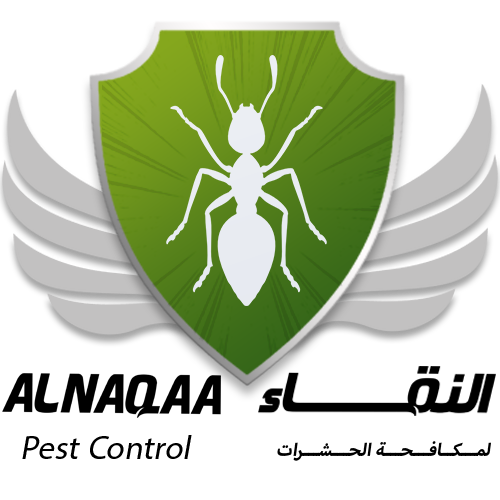Insect Communication
Due to their extraordinary diversity and adaptability, insects invented a wide variety of unique communication techniques. Insects are among the most numerous and successful animals on Earth, and they have created complex communication networks and mate-attraction strategies. Alnaqaa for Environmental Services and Pest Control, Ras Al-Khaima, United Arab Emirates delves into the remarkable realm of insect communication, examining the numerous techniques they use and revealing some of the intriguing details about their extraordinary skills.
Various Insect Communication Styles
1. Chemical Communication: Pheromones are chemical cues that insects, which are noted for having keen senses of smell, use frequently to communicate. Pheromones are particular chemical substances that individuals emit to communicate with other members of the same species. These chemical communications can be used to guide group behavior, warn of danger, mark territories for mating, and more. Bees utilize alarm pheromones to warn others of potential risks, while ants use trail pheromones to direct their nestmates toward food sources.
2. Acoustic Communication: Insects have developed an amazing capacity for sound production and detection, which allows them to communicate across great distances. Acoustic signals are mostly used for courtship and mating by crickets, which are well-known for their melodic chirping. Male crickets attract females and discourage other males by chirping excessively by rubbing their wings together. Similar to how katydids and cicadas create distinctive and complex songs to establish territories. Remarkably, some katydid species synchronize their sounds, producing a captivating chorus.
3. Visual Communication: Insects communicate predominantly through visual indicators, especially in species with well-developed eyes and vivid hues. For instance, butterflies employ their wing designs and colors to entice prospective partners. The compelling light-based communication that fireflies use to communicate their existence and attract mates is known as bioluminescence. In some areas, the synchronized flashing of fireflies produces breathtaking natural shows.
4. Tactile Communication: Insects have evolved special techniques for exchanging touch-based messages. Social insects like ants and bees communicate vital information inside their colonies through intricate movements and vibrations. For instance, honeybees use the “waggle dance” to let their nestmates know where their food sources are. They guide other foragers by indicating distance and direction by squirming their bellies and buzzing their wings.
Strange Information About Insect Communication:
1. Swarm Intelligence: Swarm intelligence is a unique collective activity displayed by insects like bees and termites. They collaborate and make choices as a single unit, ensuring collective prosperity and survival. Honeybees, for instance, select a new nest site via a “quorum sensing” technique. Scout bees conduct a sequence of dances, and a choice is chosen depending on the intensity of these dances by the entire colony. Communication inside the swarm is efficient and effective thanks to this decentralized decision-making mechanism.
2. Ultrasonic Communication: Some insects use ultrasonic frequencies that are beyond of human hearing range to communicate. For instance, moths produce ultrasonic sounds to elude their main predators, bats. These noises obstruct the echolocation of the bats, making it challenging for them to find and trap the moths. This remarkable adaptation highlights the competition for resources between prey and predators as well as the complex survival strategies developed by insects.
3. Parasitic Manipulation: Some parasitic insects, such as parasitoid wasps, take advantage of their hosts’ communication systems to secure the survival of their young. By injecting chemical substances into other insects, such as caterpillars, these wasps change their behavior by laying eggs inside of them. They guarantee the host continues to create an appropriate environment for their developing young by manipulating the host’s communication channels, which frequently results in the host’s demise.
4. Eusociality: Eusociality, a remarkable level of social organization in which individuals are separated into castes and cooperate for the benefit of the colony, is exhibited by insects like ants, bees, and termites. Maintaining and managing the intricate responsibilities inside these cultures depends heavily on communication. Eusocial insects build social hierarchies, assign jobs, and protect the colony from dangers through chemical, tactile, and audio cues.
The fascinating topic of insect communication brings to light the incredible adaptability and complexity of these little beings. Insects have evolved unique methods of communication through chemical, auditory, visual, and tactile cues to transmit information and secure their survival. Both scientists and nature lovers are fascinated by the enigmatic facts surrounding their communication methods, such as swarm intelligence, ultrasonic communication, parasite manipulation, and eusociality. Studying insect communication adds to our knowledge of these amazing organisms while also shedding light on the mysterious facts about Insect Communication, these mysterious facts include:
-Substrate Drumming: Beetles and grasshoppers, among other insects, use their legs or other specialized body parts to beat on surfaces to create rhythmic noises. It can be used to create territories, communicate hostility, or attract mates. This behavior is referred to as substrate drumming. Scientists are still investigating the precise mechanics and purposes of substrate drumming in many insect species.
-Electrical Communication: According to a recent study, some insects, such as bees and butterflies, may exchange electrical signals with one another. Their body vibrations or wing beats produce electric fields that could act as additional communication conduits. Electric fields are thought to help in navigation, partner selection, and even the identification of floral nectar sources. To fully understand the scope and importance of electrical transmission in insects, more research is required.
-Multimodal Communication: To increase the potency and dependability of their signals, insects frequently use numerous forms of communication concurrently or sequentially. To attract females visually and audibly, male mosquitoes, for example, match their flying tones with their wing beats to create a harmonious duet. Their chances of having a successful mating are increased by this combination of many signals.
The amazing complexity and adaptations that have developed within the insect world are highlighted by these enigmatic and frequently convoluted features of insect communication. A look into the mysterious and fascinating worlds of insect behavior and communication can be obtained by investigating these phenomena.






